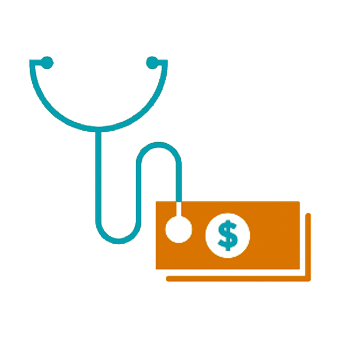This report describes the services The Hilltop Institute provided to the Maryland Department of Health (the Department) under the Master Agreement between Hilltop and the Department. The report covers fiscal year (FY) 2022 (July 1, 2021, through June 30, 2022). Hilltop’s interdisciplinary staff provided a wide range of services, including Medicaid program development and policy analysis; HealthChoice program support, evaluation, and financial analysis; long-term services and supports program development, policy analysis, and financial analytics; and data management and web-accessible database development.
The Assistance in Community Integration Services (ACIS) pilot program began in late 2017 with the goal of reducing unnecessary health services use among Medicaid beneficiaries by providing tenancy and housing case management services through four lead entities (LEs). This infographic provides a brief overview of Hilltop’s 2021 review of the pilot program.
This chart book explores service utilization and expenditures for dual-eligible beneficiaries (individuals who are eligible to receive both Medicare and Medicaid services)—with a focus on full-benefit dual-eligible beneficiaries—of all ages who received services in calendar years (CYs) 2015 through 2019.
Pursuant to Maryland Health-General §15-103.5 and Insurance Article §19-807(d)(2), the Maryland Department of Health submits an annual report to the Governor and various House and Senate committees addressing the progress of the rate-setting process; a comparison of Maryland Medicaid’s reimbursement rates with those of other states; the schedule for adjusting Maryland’s reimbursement rates; and the estimated costs of implementing the above schedule and proposed changes to the fee-for-service reimbursement rates. This report, dated January 2023, satisfies these requirements for fiscal year 2022.
The Maryland Department of Health (MDH) engaged The Hilltop Institute and Aurrera Health Group to conduct a landscape needs assessment of the state’s School-Based Health Center (SBHC) Program. The assessment will inform the Program’s strategic priorities, growth, and structure as it transitions from the Maryland State Department of Education (MSDE) to MDH. The assessment includes an analysis of the status of SBHCs in Maryland, geographic areas that may benefit from establishing SBHCs, and recommendations for program implementation and SBHC funding allocation.
Reducing hospital readmissions is a federal policy priority, and predictive models of hospital readmissions have proliferated in recent years; however, most such models tend to focus on the 30-day readmission time horizon and do not consider readmission over shorter (or longer) windows. The objective of this study, co-authored by Drs. Morgan Henderson and Fei Han and published in the Journal of General Internal Medicine, was to evaluate the performance of a predictive model of hospital readmissions over three different readmission timeframes in a commercially insured population.
This is the first annual review of the integration requirements for Medicare Advantage dual eligible special needs plans (D-SNPs), completed for the Maryland Department of Health. The goal of D-SNP integration, which became effective in calendar year (CY) 2021, is to improve coordination of care transitions for individuals who are dually eligible for Medicare and Medicaid. To meet this goal, D-SNPs are required to notify the state designees (e.g., supports planners) of Medicare hospital and skilled nursing facility (SNF) admissions when members receive long-term services and supports (LTSS) through a home and community-based services (HCBS) waiver or state plan program. This review describes key findings from the first year of implementation, focusing on aggregate trends.
This chart book explores utilization and expenditures for Medicaid-funded long-term services and supports (LTSS) in Maryland for state fiscal year (FY) 2016 through FY 2020. The focus of this chart book is on Medicaid nursing facility services, with one chapter that illustrates Maryland’s efforts at providing home and community-based services (HCBS) to an increasing number of Medicaid recipients who may otherwise be served in nursing facilities.
Using Medicaid data (2017 to 2018) from four states participating in a distributed research network, this retrospective cohort study documents the prevalence of specific types of co-occurring substance use disorder (SUD) among Medicaid enrollees with an opioid use disorder (OUD) diagnosis.
Senior Policy Analyst Shamis Mohamoud and Policy Analyst Rosa Perez were part of the Medicaid Outcomes Distributed Research Network (MODRN) team of authors of this article published in the Journal of Substance Abuse Treatment.
Policy Analyst Advanced Roberto Millar, PhD, Senior Programmer Erick Geil, and Director of Aging & Disability Studies Christin Diehl co-authored this article published in the Journal of Applied Gerontology.
In Maryland, residential service agencies deliver Medicaid home and community-based services (HCBS) to older adults with disabilities through direct care workers. Leveraging survey data from residential service agency administrators, this study describes agency characteristics and participant and family caregiver experiences by participant dementia status. Findings lay the foundation for future longitudinal and embedded interventions within Medicaid HCBS.





